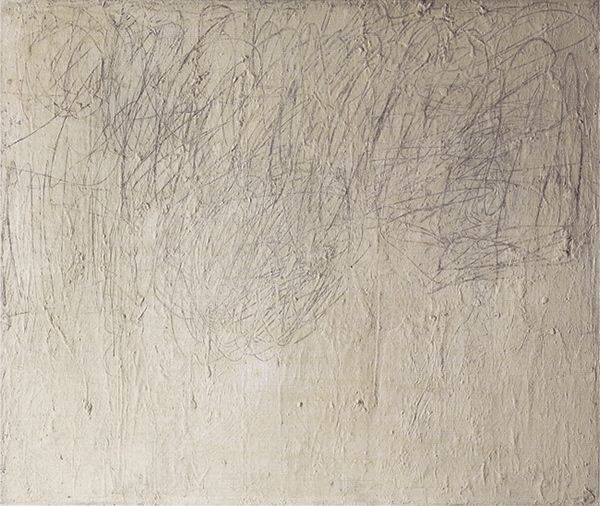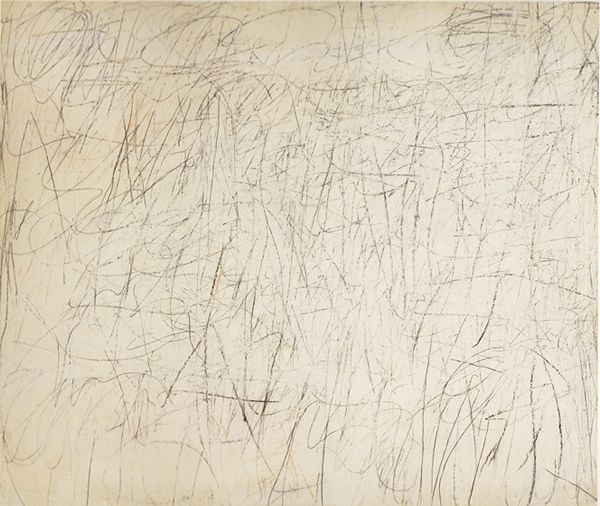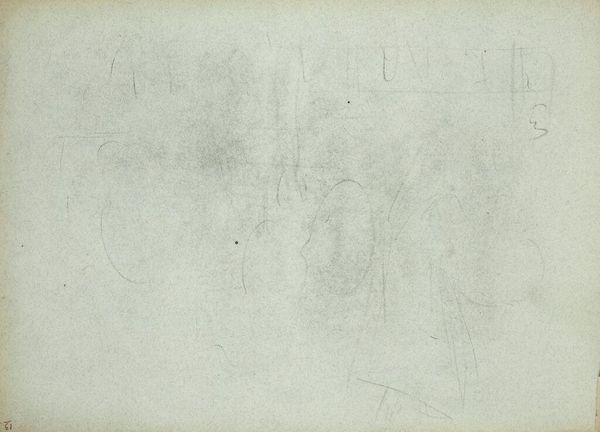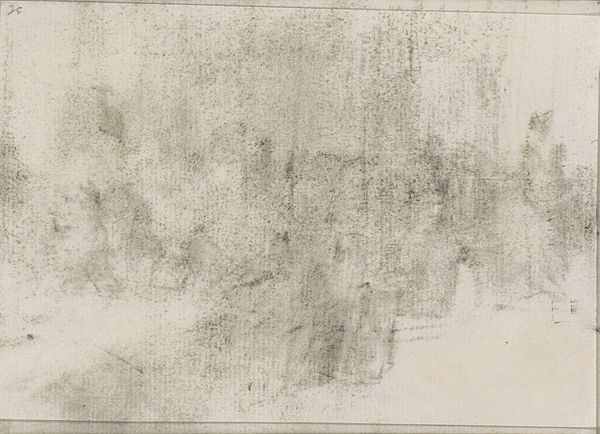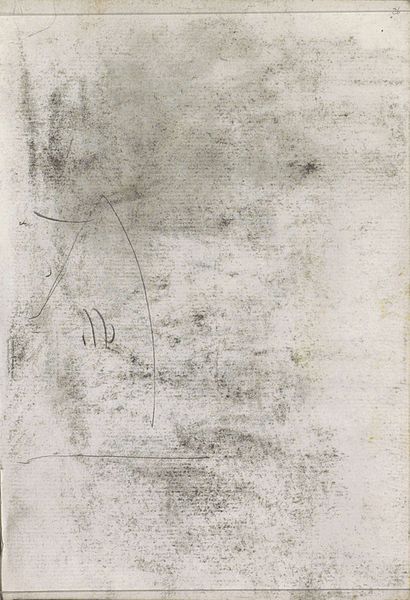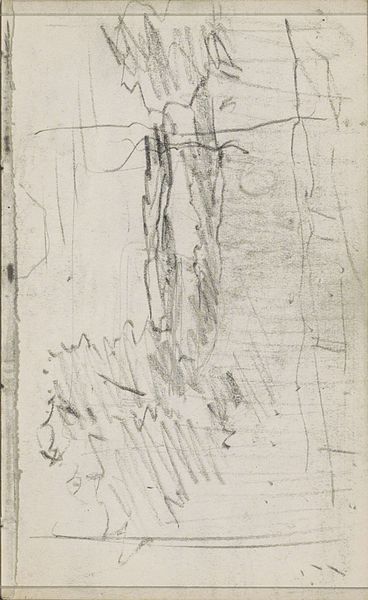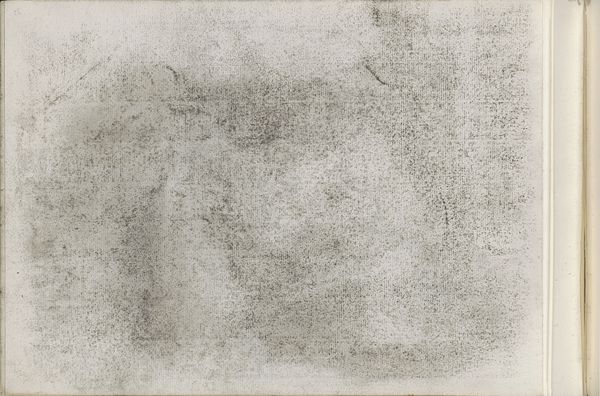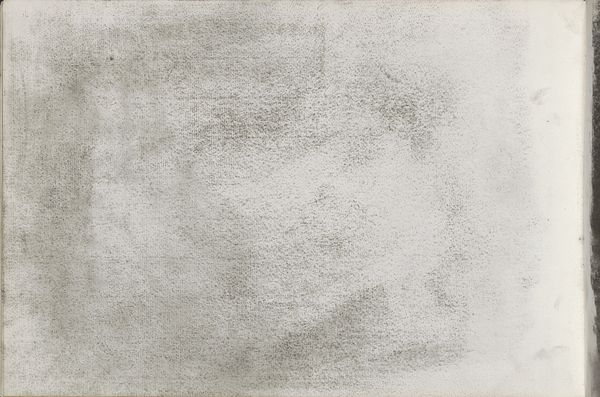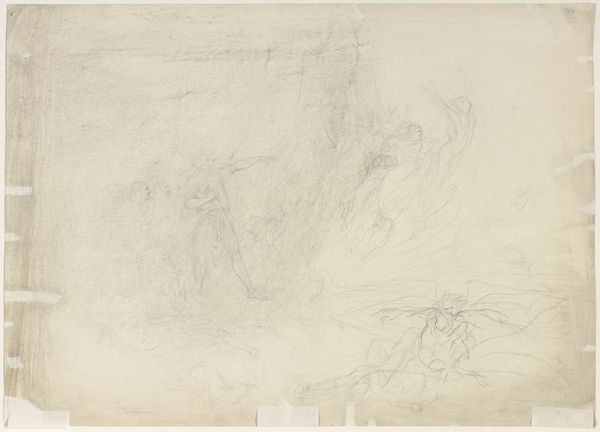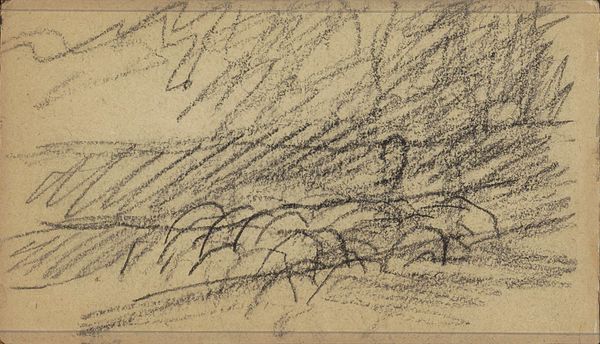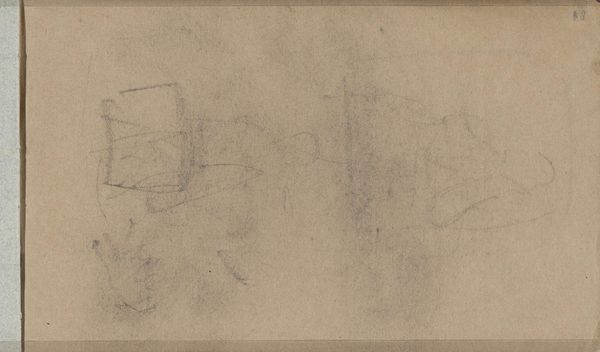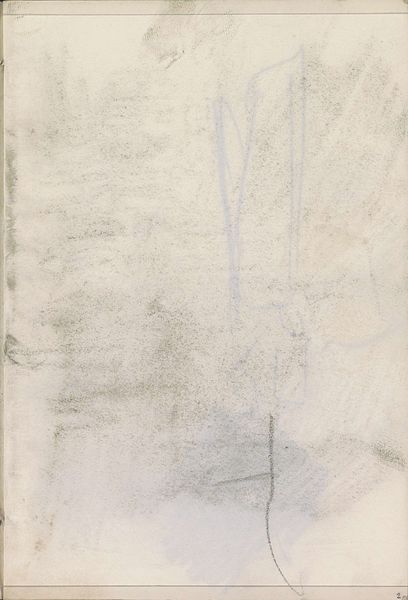
drawing, paper, dry-media, graphite, charcoal
#
abstract-expressionism
#
drawing
#
charcoal drawing
#
paper
#
form
#
dry-media
#
black-mountain-college
#
abstraction
#
line
#
graphite
#
charcoal
Copyright: Cy Twombly,Fair Use
Editor: Here we have Cy Twombly’s "Untitled" from 1956, rendered in graphite and charcoal on paper. There's this fascinating contrast: frenetic scribbles at the top give way to a comparatively blank expanse beneath. What do you see in this piece, looking at it through a Formalist lens? Curator: Its value rests within the pure visuality of form. Consider the dichotomy, indeed, between the graphic activity of the upper register and the textural field constituting the lower two-thirds. The upper section's loops and rhythmic disturbances play against the almost geological strata of the ground. The medium itself – charcoal and graphite – are crucial signifiers, drawing attention to mark-making as an act. Editor: So the meaning is in the visual tension and the process itself? Curator: Precisely. It's in how Twombly manipulates line and ground, activating the space, invoking dynamic interaction through the composition. Does this calculated distribution of the art elements not command our regard? The restrained palette further reinforces this emphasis on formal relationships. How does its seeming simplicity challenge our expectations of drawing? Editor: I see what you mean. I initially thought it looked like random scribbles, but seeing it as a conversation between line and space… it reframes the whole piece. The texture adds so much. Curator: The surface *is* crucial! That interplay underscores how material properties serve as aesthetic codes. Editor: I am left contemplating just how much "meaning" can be found solely within the formal elements of a piece like this. Thanks, it's been very insightful. Curator: Indeed. The purely visual is so frequently underestimated.
Comments
No comments
Be the first to comment and join the conversation on the ultimate creative platform.
